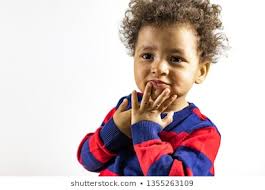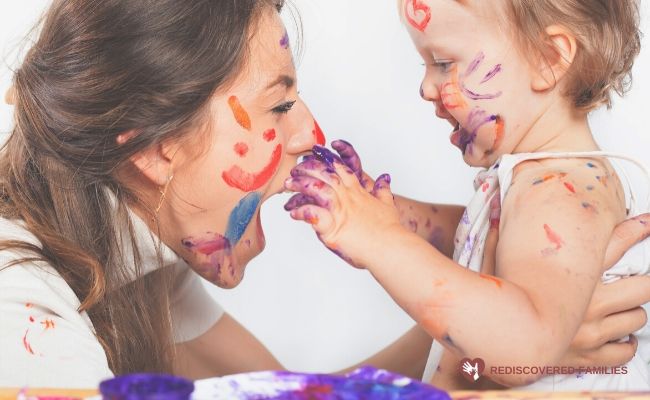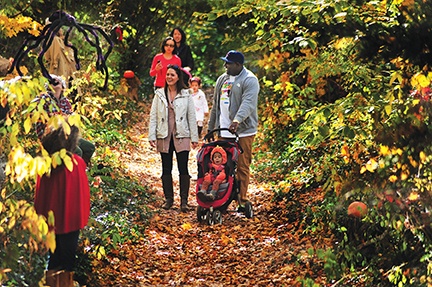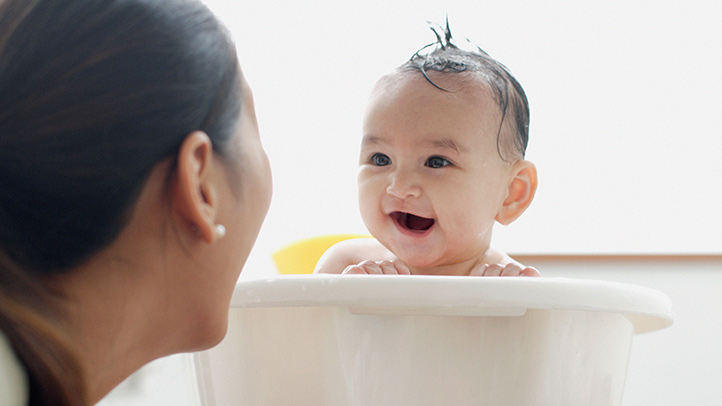What is receptive language? Although it means our understanding of language, it is not commonly understood among parents/caregivers. Most of the time the focus is on expressive language, which is how we use language. One of the top questions on the questionnaires we as parents/caregivers fill out during regular pediatrician visits is “How many words is your child saying?”. However, almost more importantly, we should know what our child is understanding! We can attach labels to everything our children see or experience in their environment very early on! From the time they are tiny, we are talking to them; during feedings, diaper changes, and play. This is how they begin to learn that everything has a name! As they begin to sit supported or independently, you can help them learn through all of their senses, then helping them to touch or eventually point to objects/pictures as you name them. Then they begin to walk and you can begin to give simple directions, as well as, make sure they respond to their names. For example, “Joey, get your cup.”. You will also most likely need to point at first to show them where it is or walk with them to show them to pick it up. As you praise them for following through, they will begin to learn names of objects they use or need on a regular basis, as well as, action words. Soon, they will begin to respond to “Where is Daddy?” by waddling over, or remembering where they put their favorite toy as you wonder out loud, “Where did that ball go?”, finding it for you! You can eventually begin to include them in some simple household chores, such as telling them to take out all the socks in the laundry basket for you😊. Children learn best from their parents/caregivers through every day routines/activities. Start early talking to them and they will show you early on how much they take in!
Month: September 2020
LET’S GET CREATIVE!
Arts and crafts can be a fun way to keep children engaged with learning many different language concepts while their little hands are busy and out of any trouble they may find😊. Even if you only have a few “art” supplies and no “artistic” ability, children will enjoy spending time with you creating, not even realizing they are learning at the same time! Use whatever supplies you have, get creative! Depending on how old your child is, monitor the curiosity of putting the tools you are using in their little mouths. Whatever you are using, crayons, markers, paint, your children can learn through observation, following directions, or through their own imagination. Label the colors you use as you show them making lines or circular motions. This is also a good way to make silly sounds for your child to imitate as you teach them scribbling(wheee while making circles, zoom while scribbling back and forth, or zip while scribbling up and down, dot-dot-dot while making dots). Body parts can be taught while drawing faces or simple sketches of people. Think about objects your child may see around them on a regular basis and provide them with choices of what you can “make” or “draw” for them. If they choose, model a short sentence to tell them what you made after you draw it, “I made a cat!” You can also use choices as a way for your child to choose a color they want, material they want(paint vs markers), or project they want to do(make a mask, draw a picture, etc). Teach them the names of the materials you have to use and incorporate some turn taking if possible. For example, “I have the glue, it’s sticky!” “Do you want some glue?” “My turn with the crayons please”. Use whatever you have, paper plates, paper bags, ingredients you have in the kitchen, shoe boxes, etc. There are a ton of creative ideas at your fingertips in a simple internet search! Your children will be learning ways to gain so many developmental skills and engaging their sensory system at the same time(seeing bright colors, touching different textures, smelling different smells, etc). Most importantly, use a ton of language to describe what you are doing, what your child is doing, and what has been created. Have fun, get messy, and get creative!
Words/sounds to include: names of objects being used, colors, paint, color, rip, draw, cut, dip, wet, sticky, big, little, water, wheeee, dot, zoom, zip, messy, wipe, etc.
TAKE A WALK!
Over the last few months, we have all been spending time outside with our families even more often than before. With Summer ending and Fall right around the corner, Winter will be here before we know it! Let’s get out and take a walk! Whether your kiddo is in a stroller, wagon, or walking with you, this is a great opportunity to teach them new words. Think of all the things they can see and touch outdoors. Label what you see while pointing to it or even helping your child feel all the different textures. For example, “Look a flower!” or “There’s a tree!”. When they are a little older, you can add some descriptive words as well. “The grass is green”, “The plane flies high up in the sky”, “Splash in the puddle”, “All wet!”. Encourage your child to feel the bark on the tree and how rough it is, then how soft the grass is or even the dog you may see! If you have multiple children, make your walk a game so they can find certain objects you tell them to, like an “I spy” game. When your child spots what you asked them to find, model “I see the….” for them to imitate. This builds on the words they may be using to label the objects as a natural expansion. There are so many bright colors right now to point out and describe. Soon, we will be describing all the beautiful Fall colors and the “Fall” objects we will be seeing. Children learn new words so quickly as adults around them teach during regular routines and activities. Let’s take advantage of the outdoors as long as we can to have fun engaging with our children while teaching them in a fun way. Plus, we all get some exercise which will help everyone feel good while soaking up all kinds of information!
Sound/words to include: trees, grass, flowers, birds, bees, butterflies, leaves, house, sun, sky, clouds, rain, snow, hot, cold, wet, dry, big, little, up, down, colors, car, truck, bus, plane, bike, train, vroom, beep, zoom, choo choo, stop, go, names of animals and their sounds, hi, bye, etc.
BATH TIME!
Bath time! It’s one of the first routines we engage our babies in. Even when they are tiny, we teach our young children a lot during this regular routine. Babies are learning about how different textures feel-the water temperature, the feel of the wash cloth, what soap feels like. Some babies love the water, some do not. Talking them through the process of bath time can engage them to learn and distract them if they feel distress. Incorporate some singing during the routine and it will help ease not only your child’s stress but your own as well! Explain what is happening when they are little, ask them questions as they get older about the process. For example, “We turn the water on”, “Brrrr it’s cold!”, “Let’s make it nice and warm.”, “We get some soap for the washcloth and scrub your belly, your arms, now your…..”. Keep going as you name each body part. When they are older, play a game and ask them “Where’s your nose?”, “Where’s Mommy’s nose?”, “Beep, there it is!”. This is a good way to learn body parts. Not only are they in the tub and it’s a little more difficult to move to another activity, but the acoustics in the bathtub are beneficial for children to learn speech and language. Talk about the toys they may play with by labeling them and describing what the toy is doing. This is also a good time to give choices as they play and take turns with the toys with you. For example, “Do you want the boat or the duck?”. Wait for your child to either use the word to ask for it or gesture toward the choice. If you can, hold the toy close to your mouth as you model the word and cue them to try to imitate it. Also, make sounds while playing or even silly faces for your child to eventually imitate. Receptive language skills can also be built during this routine. Provide them simple directions during play, such “Give Daddy the duck please”, or “Put the boat in the water”. The bathtub provides a great opportunity to have fun while your baby learns to communicate with you!
Sounds/words to include: water, soap, washcloth, towel, bubbles, on, off, hot, cold, wet, dry, in, out, splash, plop, dump, pop, names of body parts, names of toys, etc.



